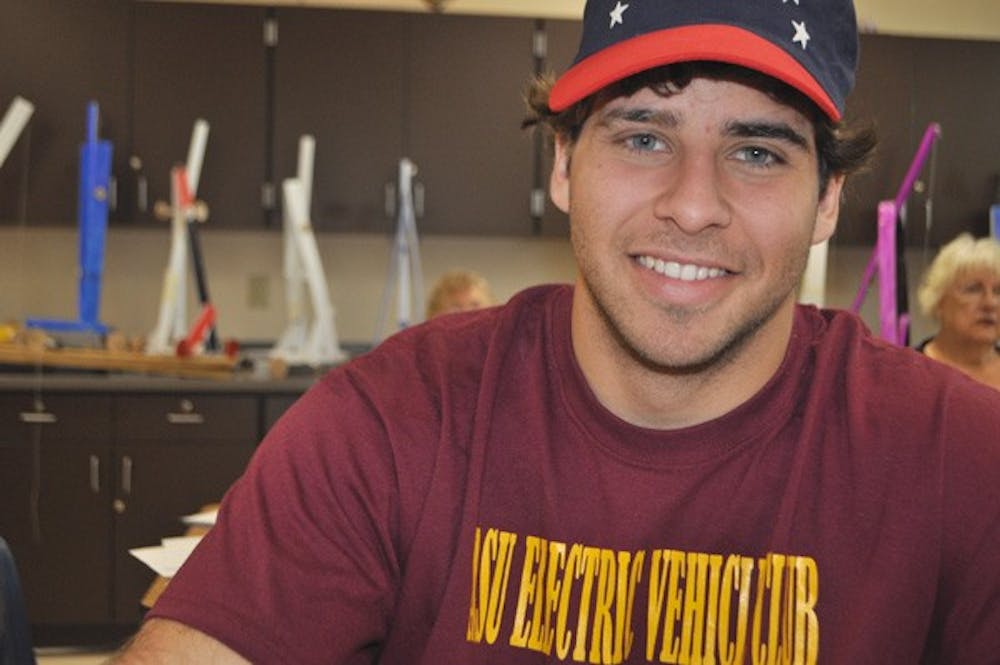Grand Hustle, Massive Construction and Big Papa were a few of the colorful names given to the 11 gravity cruisers ASU engineers helped seventh graders build at the Hill Learning Academy in Chandler, Ariz.
Engineering junior Harald Schweitzer volunteered at the academy for the past eight weeks to help students build the gravity cruisers: a two-axle, four-wheel, breadbox-sized platform with a tall, weighted arm attached to it.
When the arm drops, it spins the rear axle and drives the whole contraption forward, with some going as far as 18 feet. Building this specific contraption helps the students learn about gravity and science.
Putting college engineers into elementary and middle schools to give kids a fun educational activity has been the goal of the group A World In Motion since the 1980s.
The Society of Automotive Engineers, a global organization of engineers and technical experts, started AWIM because it wanted to help develop the next generation of auto engineers.
AWIM’s programs now reach 40,000 elementary and middle school students in different parts of the U.S. and have been in Arizona for the last five years, said Don Robbins, a retired General Motors automotive engineer and coordinator for AWIM in Arizona.
“When we have consecutive multiple grade programs in a school, kids really look forward to the next year’s project,” Robbins said.
AWIM offers the opportunity to build balloon-powered jet toys in fifth grade and more challenging projects in higher grades, like building fuel cells.
Helping elementary school students build projects like the gravity cruiser earns Schweitzer’s auto-engineering club cash from AWIM that the group can use to pay a $2,000 registration fee for the national SAE automotive competition to be held this May in Loudon, N.H.
The SAE event pits vehicles built by undergraduate and graduate students worldwide in a three-day event that tests the vehicles’ acceleration, fuel efficiency and other areas of performance.
Schweitzer said part of why he volunteers is the money his auto-engineering club will receive.
But having already completed the hours he needed to earn the money, Schweitzer was at the school on the last day to measure the distance the gravity cruiser traveled.
“We sort of do this because … a lot of us do want to give back to the community,” Schweitzer said.
Twenty-one ASU engineering students volunteer in five different middle and elementary schools in the Valley as part of the SAE/AWIM program, Robbins said.
Six students from the Polytechnic campus have also participated in the AWIM-sponsored programs and plan to enter their club’s vehicle in the off-road recreational category of the SAE event in May, Robbins added.
Ricardo Rodarte, one of the seventh graders who built a gravity cruiser, said at first he didn’t think it was going to work and was surprised when it did.
“It’s gravity and since … you can’t even see it, I didn’t understand how that’s going to work … but the string attached to it pulls the wheel and axle and makes it spin,” Rodarte said.
Rodarte said he would do another project like this, but added that even though he likes engineering, he wants to work in law enforcement when he gets older.
David Sullivan, one of the parents present on the last day of the eight-week program, said his son Brian learned if it doesn’t work the first time, he has to try and do it again.
Sullivan added that he had no engineering background at all.
“I couldn’t even help him with it. So he was pretty much on his own,” Sullivan said.
Reach the reporter at cbleone@asu.edu





